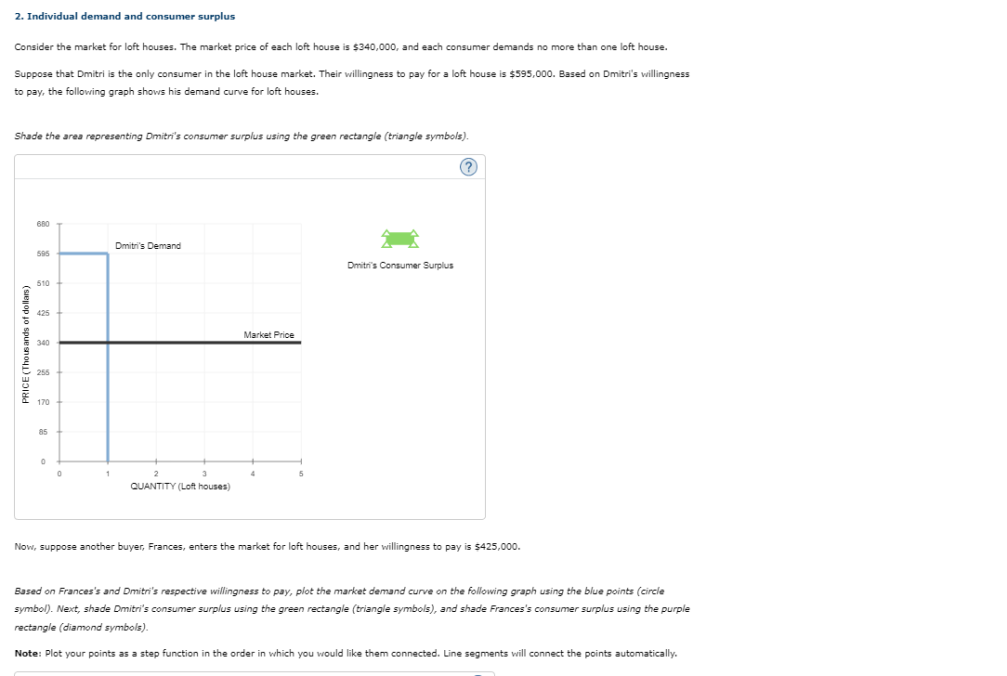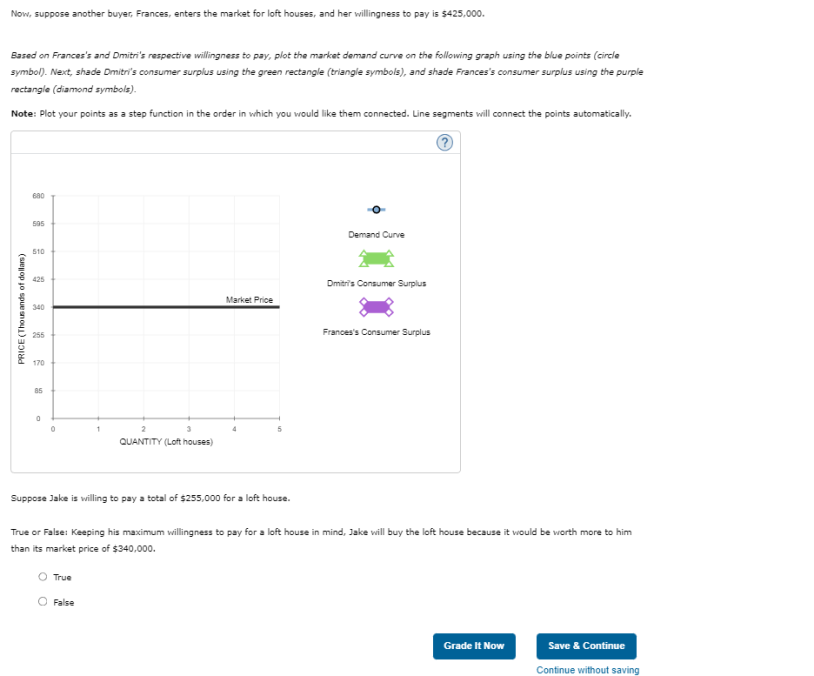Home /
Expert Answers /
Economics /
2-individual-demand-and-consumer-surplus-consider-the-market-for-loft-houses-the-market-price-of-pa423
(Solved): 2. Individual demand and consumer surplus Consider the market for loft houses. The market price of ...
2. Individual demand and consumer surplus Consider the market for loft houses. The market price of each loft house is , and each consumer demands no more than one loft house. Suppose that Dmitri is the only consumer in the loft house market. Their willingness to pay for a loft house is . Based on Dmitri's willingness to pay, the following graph shows his demand curve for loft houses. Shade the area representing Dmitris consumer surplus using the green rectangle (triangle symbols). Now, suppose another buyer, Frances, enters the market for loft houses, and her willingness to pay is 5425,000 . Based on Frances's and Dmitri's respective willingness to pay, plot the market demand curve on the following graph using the blue points (circle symbol). Next, shade Dmitri's consumer surplus using the green rectangle (triangle symbols), and shade Frances's consumer surplus using the purple rectangle (diamond symbols). Note: Plot your points as a step function in the order in which you would like them connected. Line segments will connect the points automatically.
Now, suppose another buyer, Frances, enters the market for loft houses, and her willingness to pay is . Based on Frances's and Dmitri's respective willingness to pay, plot the market demand curve on the following graph using the blue points (circle symbol). Next, shade Dmitri's consumer surplus using the green rectangle (briangle symbols), and shade Frances's consumer surplus using the purple rectangle (diamond symbols). Note: Plot your points as a step function in the order in which you would like them connected. Line segments will connect the points automatically. Suppose Jake is willing to pay a total of for a loft house. True or Falsei Keeping his maximum willingness to pay for a loft house in mind, Jake will buy the loft house because it would be worth more to him than its market price of . True False
Expert Answer
There are three individuals who want to pay different prices for a single unit of the commodity. Step:1

